While every runner will likely experience an injury at some point, it’s still beneficial to do everything you can to prevent them from happening in the first place. What better way to do your due diligence than to take the doctor’s advice?
Here are 10 Ways To Prevent Running Injuries from Dr. Stacie Grossfeld herself:
1. Do not increase your mileage more than 10 percent per week.
Gradually preparing your body to take on more will allow it to handle the stress more evenly on your joints as well as build endurance.
2. Warm up to warm up. Do a light run or some type of exercise until you have a light sweat, then stretch. Stretching cold muscles is a bad idea.
Warming up before you stretch helps increase the blood flow to your muscles, making them more flexible and mobile.
3. Replace your shoes before they are worn out.
Running on shoes that are past their prime means you’re likely missing out on shock absorption, cushioning and stability. All of these characteristics are valuable because they help to reduce the amount of stress and impact on your joints.
4. Try to change up running surfaces to change the load and force on your legs.
Each surface you run on poses a unique challenge to your muscles, by it up you reduce the chance of an overuse injury and increase your ability to tackle new terrains.
5. Cross train on your days off.
Routinely engaging in another sport or activity can help your body’s joints recover and allow you to strengthen other areas in need.
6. Track your mileage, surface and workout type to review in case an injury occurs.
Keeping tally of how long you run for and whether these runs tend to be on hard or soft surfaces will allow you to better pinpoint the cause of any future injury.
7. Listen to your body. You may have a training plan but your body might need a modification.
While it’s good to set goals and challenge yourself, don’t be afraid to listen to your body and make changes to your training plan that will keep you from injuring yourself.
8. Do not let injuries linger if they are not improving.
If you are struggling with a running injury, make sure you seek the right medical attention and treatment plan for you. Ignoring injuries or running through them can sometimes increase the magnitude of the problem.
9. Stay hydrated.
Drinking enough water is essential to preventing heat exhaustion and dehydration; illnesses that can leave you feeling fuzzy and put you in serious harms way.
10. Seek the advice of professionals if you are new to the sport.
If you’re interested in becoming an avid runner, ask those whose are experts in the field for training tips. Why not start off on the right foot?
To get more information on injury prevention and learn about innovative treatment options, continue reading our blog. Dr. Stacie Grossfeld is a trained orthopedic surgeon who is double board-certified in orthopedic surgery and sports medicine. To make an appointment with the Orthopaedic Specialists, call us at 502-212-2663 or use the contact form online.
 This x-ray shows the different regions of the hip joint. The red arrow is the femoral neck and the yellow area shows the intertrochanteric region of the hip.
This x-ray shows the different regions of the hip joint. The red arrow is the femoral neck and the yellow area shows the intertrochanteric region of the hip.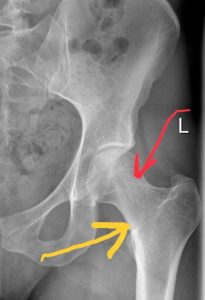

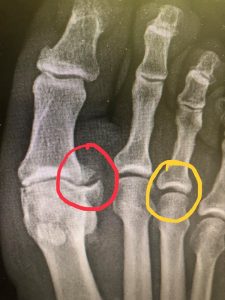
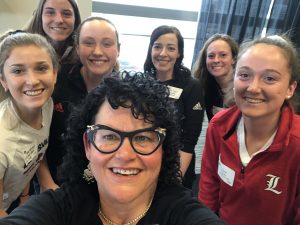
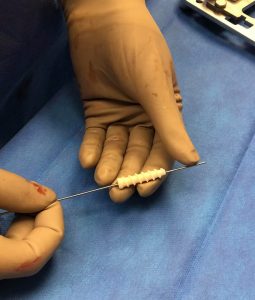
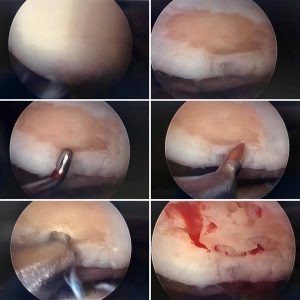
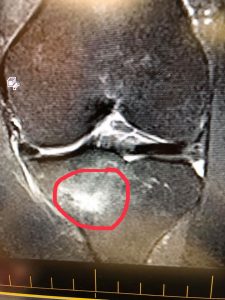



 Osteoarthritis is the breakdown of the cartilage that covers the ends of each long bone. Think of each long bone in your body as having a hat over each end. The hat is the cartilage. As the hat material wears out, the end of the bone becomes exposed. Osteoarthritis is the process where the cartilage is wearing down, similar to the
Osteoarthritis is the breakdown of the cartilage that covers the ends of each long bone. Think of each long bone in your body as having a hat over each end. The hat is the cartilage. As the hat material wears out, the end of the bone becomes exposed. Osteoarthritis is the process where the cartilage is wearing down, similar to the 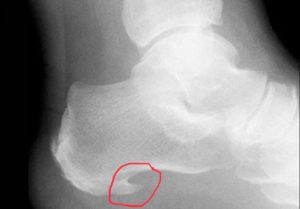 Treatment for a bone spur involves treatment for the underlying plantar fasciitis. Surgically removing the bone spur does not correct the problem. The bone spur will return if the plantar fasciitis is not treated. Plantar fasciitis is treated with physical therapy, stretching, anti-inflammatory medications, shoewear modifications, a night splint, Cortizone injections, and PRP injections.
Treatment for a bone spur involves treatment for the underlying plantar fasciitis. Surgically removing the bone spur does not correct the problem. The bone spur will return if the plantar fasciitis is not treated. Plantar fasciitis is treated with physical therapy, stretching, anti-inflammatory medications, shoewear modifications, a night splint, Cortizone injections, and PRP injections.
Recent Comments